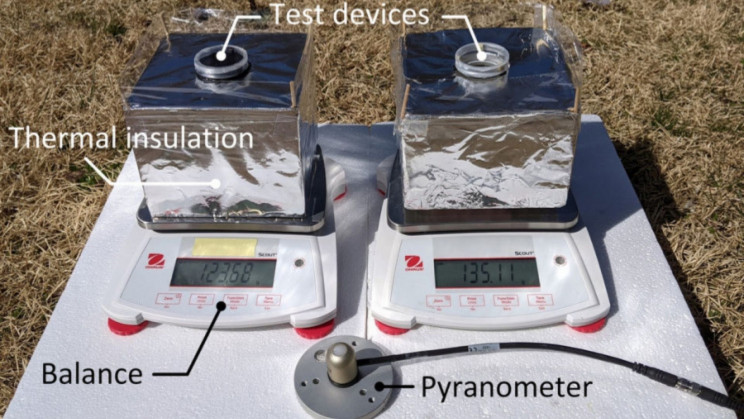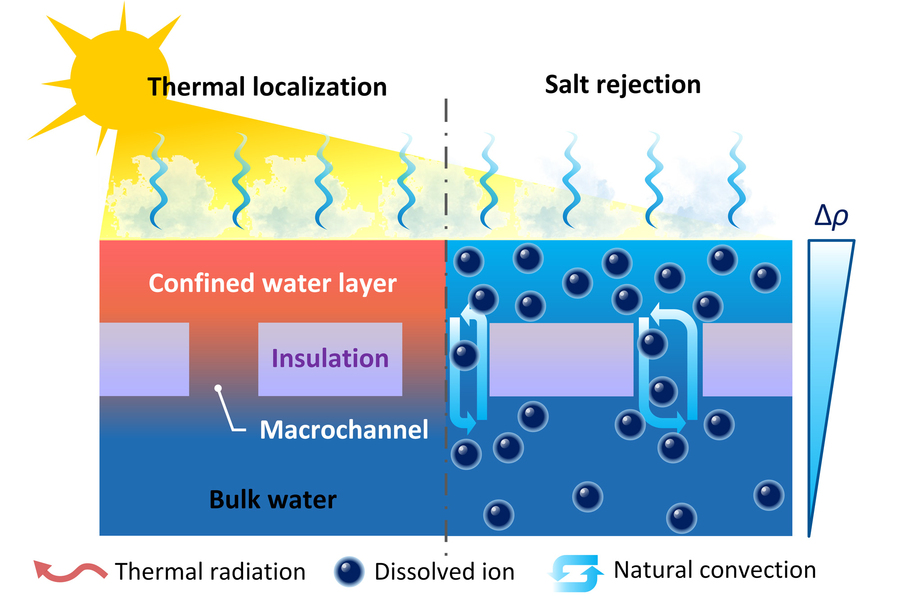A $4 Desalination System Will Soon Provide Families with Continuous Clean Drinking Water

Some years back, in a UNICEF report, about 2.1 billion people worldwide lacked access to potable drinking water. The issue continues to be a problem. Nearly 120 countries worldwide, such as countries in the Middle East and UAE, Gibraltar, Spain, Japan, India, Greece, China, Australia, and Italy, have desalination plants. About 50 percent of these countries use seawater. A desalination plant typically processes seven gallons of seawater to get one gallon of fresh water. The process is automatic. But while desalination plants are viable, the cost of the construction and upkeep of the plants prevent more countries from having such a project.
New portable device
But relief may be available soon. A team of MIT scientists developed a new $4-solar-powered desalination device. Their process can stop salt buildup in devices.
According to the scientists, they built a 10.8 ft2 (1 m2) model of the desalination device for four dollars and used everyday materials. The team says that the system is easy to scale, and many people worldwide can use it. It can supply a family with their daily drinking water.
This is excellent news. The UNICEF projects that by 2025, scarcity of safe drinking water will affect half of the world’s population.
The research is an MIT and the Shanghai Jiao Tong University joint project. Their desalination device does not have a wick. The wick is usually the most problematic because it needs regular and thorough cleaning or replacement due to salt buildup. The team believes that this new system could help address the water shortage problem that many countries in the world experience. Likewise, they think that their system is very efficient.

How the new system works
The research paper published in Nature Communications comprises several layers. The layers float on top of a salt water-filled container. The system works this way:
- A thin layer of material with tiny 2.5mm perforations draws up a minimal amount of water from the container.
- A dark material that can absorb the heat of sunlight heats and evaporates the water.
- The system collects the condensation from the evaporation, which is already drinkable.
The process leaves the salt in the remaining water. The innovative idea in the system is the tiny holes in the top layer, which creates a natural convective circulation method. The warmer water stays above the water, which is denser because of the salt. The remaining water from the desalination process moves back into the colder water below, and the cycle starts again.
The scientists explain that their system is over 80 percent more efficient at changing solar energy into water vapor, even if the water contains salt concentrations of over 20 percent.
Another impressive feature is that no fouling occurred even after using the system for one week. Fouling is the harmful buildup of salt within the device that can reduce efficiency or damage the device.
What is fouling?
Fouling is a recurring problem with a desalination system, particularly if the system has a wick. In previous systems, salt and other impurities that the process filters out collect on the device’s membranes and surfaces. Therefore, most of the parts need regular cleaning or replacing. However, most of the fouling occurs on the wicking materials. Considering this fact, the scientists designed the wick-free desalination device that uses solar power.
Testing period
The desalination system is still in the testing phase. According to the team, the device showed stability during the seven-day test. Users can install the device as a floating platform on a body of water. The scientists say that they need to do more work to make the system a workable commercial device. They also need to improve the potable water production rate. The entire working period to turn the device into a commercial system will take a few more years.
Initially, the scientists think their system will find the first application to provide safe, potable water in remote locations. Likewise, the device will be effective during disaster relief operations. Further, it will be effective when there are disruptions to the regular water supply.